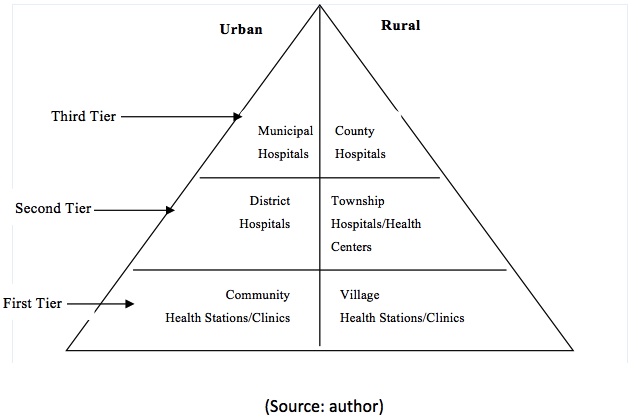Memo #279
By Jiong Tu – jt457 [at] cam.ac.uk
 Since the 1980s, when China began to adopt market reforms, its health care system experienced a transition from fully state-run and financed care toward more privately financed and delivered health care. These changes led to soaring medical fees, minimal medical insurance coverage, and poor access to affordable medical services. These negative consequences have in turn undermined public perceptions of the Chinese government. In response to this, since 2009, China has been implementing a new round of health care reforms that are attempting to reverse the market character of earlier trajectories.
Since the 1980s, when China began to adopt market reforms, its health care system experienced a transition from fully state-run and financed care toward more privately financed and delivered health care. These changes led to soaring medical fees, minimal medical insurance coverage, and poor access to affordable medical services. These negative consequences have in turn undermined public perceptions of the Chinese government. In response to this, since 2009, China has been implementing a new round of health care reforms that are attempting to reverse the market character of earlier trajectories.
State policies now aim at rebuilding a state-sponsored health system, under the slogan, “one goal, four beams, and eight columns” (“yige mubiao, siliang bazhu”), symbolizing the structure of a traditional Chinese house. The “one goal” is the establishment of a basic health care system providing universal health care coverage. The “eight columns” refer to the eight functional mechanisms to support the reform, operated by various government departments. The “four beams” are the main reform themes, i.e. the four systems the reform aims to build: a public health system geared towards both rural and urban residents; a health service system that makes basic healthcare available to all citizens through a three-tiered structure (see figure below); a medicine provision system for securing safe and affordable medications; a health insurance system that provides health insurance coverage for all, including health insurance for urban employees, unemployed urban residents, and a new cooperative medical insurance scheme for rural residents.
The Chinese government aims to increase available health service as a social palliative to reduce rising popular resentment, and thereby improve its moral and political legitimacy by meeting people’s needs and shifting towards more “responsible” governance. The ongoing health reform is heading in the right direction in the sense that it tries to restore the public welfare nature of healthcare. It has already met with some positive responses from the people. But the Chinese health reforms are tackling unprecedented challenges, including those created by the sheer size of China’s population, and thus, will require close monitoring as they move forward.
Figure: China’s Three-Tiered Health Care System Pyramid
About the Author:
Jiong Tu is a PhD candidate in the Department of Sociology, University of Cambridge.
-
Links:
- Zhu Chen, “Launch of the health-care reform plan in China,” The Lancet, April 2009.
-
“Opinions of the CPC Central Committee and the State Council on Deepening the Health Care System Reform,” The Central People’s Government of the People’s Republic of China, April 2009 (in Chinese) (in English)
-
Linda Wong, “Mending the Chinese Welfare Net: Tool for Social Harmony or Regime Stability?,” paper presented at the 7th EASP Conference: “Searching for New Policy Paradigms in East Asia: Initiatives, Ideas and Debates, 2010
- Winnie Yip & William Hsiao, “China’s health care reform: A tentative assessment,” China Economic Review 20 (2009)

A township hospital in Sichuan province rebuilt under the new health reforms. The slogans on the walls concern the new health reform policies (Credit: Jiong Tu).
Related Memos:
See our other memos on China.

Comments are closed, but trackbacks and pingbacks are open.